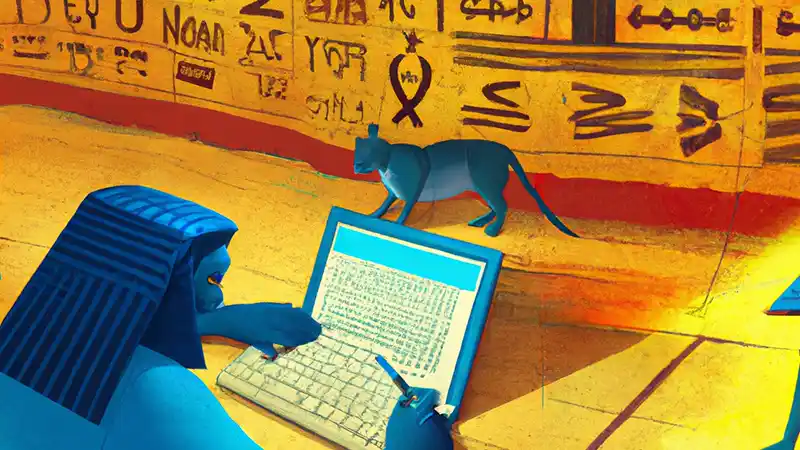In today’s dynamic educational landscape, catering to diverse learners’ unique needs is paramount. Differentiated instruction, an approach that tailors teaching methods to individual student needs, is at the forefront of this educational revolution. In this comprehensive guide, we’ll delve into 101 differentiated teaching strategies that can transform any classroom into a haven of personalized learning. But that’s not all – for educators eager to apply these techniques seamlessly, there’s a groundbreaking tool at your fingertips. Head over to the AI Differentiated Instruction Creator on The Teachers’ Blog. Whether you’re starting with a fresh topic or have a lesson plan in hand, simply enter the details or paste your plan, and voila! The tool effortlessly generates a customized DI lesson tailored to ensure every student thrives.
Understanding Differentiated Instruction
At its core, differentiated instruction is an educational philosophy that emphasizes the creation of multiple avenues to learning. It’s founded on the belief that students, each with their unique set of strengths, needs, and backgrounds, require varied teaching methods to grasp content effectively. In essence, it’s about ensuring that instruction resonates with every learner, regardless of their starting point.
In today’s classroom, the importance of differentiated instruction cannot be overstated. With the increasing recognition of diverse learning styles, backgrounds, and abilities, a one-size-fits-all teaching approach is quickly becoming obsolete. Differentiated instruction champions individualization, fostering an environment where every student feels seen, valued, and empowered. By tailoring lessons to cater to each student’s unique learning trajectory, we not only enhance academic outcomes but also bolster students’ confidence and love for learning.
Without further ado, here is the strategies guide.
Differentiated Teaching Strategies
1. A/B Journaling: A/B Journaling involves students writing on one side of their journal (Side A) while teachers provide feedback, ask questions, or add supplementary information on the opposite side (Side B).
Benefits: This strategy promotes consistent communication between the student and teacher. It allows for real-time feedback, clarification of misunderstandings, and fosters reflective learning. The dual-sided approach makes the learning process more collaborative and personalized.
2. Anchor Activity: An anchor activity is a task or set of tasks that students can work on independently throughout a unit, providing them with a productive direction if they finish their work early.
Benefits: Anchor activities accommodate varying learning rates in the classroom. They ensure all students remain engaged and challenged, reducing downtime and promoting continuous learning.
3. Anchor Chart: An anchor chart is a visual and interactive tool, often co-created by the teacher and students, that captures key concepts, processes, or guidelines related to a lesson.
Benefits: Anchor charts serve as accessible reference points, aiding memory retention and reinforcing learning. They foster collaborative creation of knowledge and cater to visual learners.
4. Anticipation Guide: An anticipation guide is a pre-reading strategy where students respond to statement predictions about a text. After reading, they revisit the guide to confirm or refute the predictions.
Benefits: This method piques student interest and sets a purpose for reading. It stimulates critical thinking and helps in activating prior knowledge about the subject.
5. Auditory Lesson: An auditory lesson prioritizes learning through listening, using methods like discussions, podcasts, or oral presentations.
Benefits: Catering to auditory learners, this strategy improves listening skills and fosters better retention for those who learn best through hearing. It also promotes verbal communication and discussion skills.
6. Blended Learning: Blended learning combines traditional face-to-face instruction with online learning experiences.
Benefits: This approach offers flexibility, catering to various learning styles. It combines the benefits of personal interaction with the versatility of online resources, providing diverse avenues for understanding and engagement.
7. Case Study: A case study involves an in-depth exploration of a particular topic or scenario, often based on real-life situations or detailed scenarios.
Benefits: Case studies foster critical thinking, problem-solving, and application of knowledge in real-world contexts. They provide depth and context to theoretical knowledge.
8. Choice Boards: Choice boards are visual tools that present a variety of activities or tasks related to a specific learning objective, allowing students to choose how they want to learn.
Benefits: Choice boards empower students by giving them agency over their learning path. They cater to diverse learning styles and preferences, promoting engagement and ownership of the learning process.
9. Choice in Demonstrating Learning: This strategy allows students to choose how they want to showcase their understanding, be it through essays, presentations, projects, or other means.
Benefits: By allowing students to leverage their strengths, this approach fosters creativity, engagement, and deeper understanding. It recognizes that students have diverse talents and lets them shine in their preferred medium.
10. Choice Test: A choice test provides students with options for how they wish to be assessed, such as multiple-choice, essay, oral presentation, or project-based assessments.
Benefits: This method respects individual learning and assessment preferences. It can reduce test anxiety by allowing students to demonstrate understanding in a format they’re comfortable with, leading to a more accurate reflection of their knowledge.
11. Concept Map: A concept map is a visual representation of knowledge, showcasing the relationships and hierarchies between different concepts.
Benefits: Concept maps help students understand the connections between ideas, aiding in knowledge retention and synthesis. They cater to visual learners and support the organization of complex information.
12. Cross-Curricular Project: A project that integrates concepts from multiple subjects or disciplines, encouraging holistic understanding and application.
Benefits: By merging different areas of study, students see the interrelatedness of knowledge, fostering a deeper, contextual understanding. It also nurtures skills like critical thinking and interdisciplinary application.
13. Cubing

Cubing is an instructional strategy where a topic is explored from six distinct perspectives, much like the sides of a cube.
Benefits: Cubing offers a comprehensive exploration of a concept, catering to different learning styles. It promotes critical thinking by pushing students to approach a topic from various angles.
14. Data Folder: A data folder is a student-maintained record of their progress, achievements, goals, and areas for improvement.
Benefits: By maintaining a data folder, students take ownership of their learning, setting goals and reflecting on their progress. It fosters self-assessment and responsibility.
15. Debate: A structured argument where participants discuss opposing viewpoints on a particular topic.
Benefits: Debates hone critical thinking, research, and public speaking skills. They promote active engagement with a topic and foster understanding of multiple perspectives.
16. Dialogue Circles: A discussion format where participants sit in a circle and engage in open conversation, usually with set norms and guidelines.
Benefits: Dialogue circles encourage active listening, respect for diverse opinions, and foster a sense of community. They promote empathy and understanding in classroom discussions.
17. Differentiated Drill Activity: Standard repetitive practice exercises (drills) that are tailored to meet the diverse needs and proficiency levels of students.
Benefits: By differentiating drills, educators ensure that every student is challenged at an appropriate level. This prevents boredom or frustration and ensures continuous skill progression.
18. Differentiated Lab Tasks: In a science or hands-on environment, these are lab activities tailored to suit varying student abilities, interests, or learning profiles.
Benefits: Differentiated lab tasks ensure that students engage in hands-on activities aligned with their readiness levels. It maximizes learning by ensuring tasks are neither too challenging nor too easy.
19. Differentiated Quizzes: Assessment quizzes that offer varied questions or formats tailored to individual student needs or readiness levels.
Benefits: These quizzes cater to different learning styles and readiness, providing an accurate gauge of individual understanding without overwhelming or under-challenging students.
Turn your ideas or old lessons into engaging DI strategies now!
20. Differentiated Role Play: A dramatization activity where students are assigned roles based on their strengths, interests, or learning profiles.
Benefits: By tailoring roles to students, differentiated role play ensures engagement and comprehension. It allows students to immerse themselves fully, leveraging their unique strengths and perspectives.
21. Differentiated Workshops: Workshops that are designed to cater to diverse learners, often by providing varying levels, themes, or formats tailored to individual needs.
Benefits: These workshops ensure that every student finds a fit for their learning pace, style, and preference, promoting deeper engagement and understanding.
22. Digital Portfolios: A collection of digital work, reflections, and evidence of learning progress, often stored on an online platform or e-portfolio tool.
Benefits: Digital portfolios allow students to showcase their growth over time, foster reflection, and offer a platform for feedback. It also prepares students for a digital-first world, enhancing tech-savviness.
23. Directed Paraphrasing: Students are asked to paraphrase parts of a lesson or content in their own words for a specific audience or purpose.
Benefits: This strategy tests comprehension and reinforces learning. It also cultivates the skill of adapting communication based on the intended audience.
24. Entry Ticket: A brief activity or question students complete at the beginning of a lesson to gauge prior knowledge or set the stage for new learning.
Benefits: Entry tickets help teachers quickly assess where students stand on a topic, allowing for real-time adjustments to instruction. It also primes students for the day’s lesson.
25. Error Analysis: A method where students analyze mistakes or incorrect answers to determine where their understanding went astray.
Benefits: Error analysis promotes a growth mindset, teaching students to learn from mistakes. It deepens understanding by addressing misconceptions directly.
26. Exit Ticket: A short assessment at the end of a lesson to gauge student understanding, gather feedback, or reflect on the day’s learning.
Benefits: Exit tickets provide immediate insights into student comprehension, helping educators tailor subsequent lessons. They also reinforce learning by prompting students to summarize and reflect.
27. Experiment: A hands-on activity where students test hypotheses or explore concepts through direct experience.
Benefits: Experiments promote active learning, critical thinking, and the application of theoretical knowledge in real-world contexts. They cater to kinesthetic learners and foster curiosity.
28. Expert Groups: A strategy where students are grouped and assigned specific topics to become “experts” in. After researching, these experts share their knowledge with peers.
Benefits: Expert groups foster deep dives into specific topics, promote collaborative learning, and utilize peer teaching, which can reinforce the understanding of both the teacher and learner.
29. Exploratory Essay: An essay where students explore a topic without a predetermined stance, allowing for open-ended research and discovery.
Benefits: Exploratory essays cultivate open-mindedness, research skills, and critical thinking. They encourage students to approach topics with curiosity and without bias.
30. Fishbowl Discussion: A discussion format where a small group sits in the center (like fish in a bowl) and discusses a topic, while the rest of the class observes. Roles often rotate.
Benefits: Fishbowl discussions promote active listening, critical thinking, and allow for deep dives into topics. Observers can learn from peers, and the format ensures varied participation.
31. Flipped Classroom: An instructional approach where traditional homework and in-class activities are reversed. Students watch lectures or read materials at home, then engage in hands-on activities or discussions in class.
Benefits: Flipped classrooms promote self-paced learning and free up classroom time for deeper exploration, collaboration, and direct teacher-student interaction.
32. Four Corners: An activity where students move to one of the four corners of the room based on their opinion or answer to a given statement or question.
Benefits: This strategy physically engages students, allowing for kinesthetic movement while also promoting discussion, debate, and a visual representation of differing viewpoints.
33. Frayer Model: A graphic organizer used for word analysis and vocabulary building, comprising a square divided into four sections: definition, characteristics, examples, and non-examples.
Benefits: The Frayer Model deepens vocabulary comprehension by approaching words from multiple angles. It promotes critical thinking and conceptual understanding.
34. Gallery Walks: An activity where students’ work or information about a topic is displayed around the room, and students rotate around, often leaving feedback or reflections.
Benefits: Gallery walks encourage active engagement, peer feedback, and a diverse exploration of topics. They cater to visual learners and promote a sense of community through shared learning experiences.
35. Game-based Learning: The use of games (digital or physical) to achieve educational goals and enhance learning.
Benefits: Games capture students’ attention, making learning fun and interactive. They can foster problem-solving skills, collaboration, and real-world application of knowledge.
36. Genius Hour: A block of time where students explore their own passions and inquiries, leading to deeper research and project creation.
Benefits: Genius Hour empowers students by giving them autonomy over their learning, fostering creativity, innovation, and intrinsic motivation.
37. Graphic Summary: A visual representation of information, concepts, or data, such as infographics, charts, or diagrams.
Benefits: Graphic summaries cater to visual learners and simplify complex information, aiding in comprehension and retention.
38. Group Investigations: Collaborative research projects where students dive deep into a topic, often leading to presentations or product creation.
Benefits: Group investigations promote teamwork, research skills, critical thinking, and a deep understanding of chosen topics.
39. Hands-on Activity: Activities that require active physical participation, manipulation of objects, or real-world application of knowledge.
Benefits: Hands-on activities cater to kinesthetic learners, reinforcing theoretical knowledge with practical experience. They also promote engagement and experiential learning.
40. Hot Seat Questions: A student (or a group of students) assumes the role of a specific character, concept, or author, and others ask them questions, to which they must respond in character.
Benefits: Hot seat questions enhance comprehension by immersing students in a role. It promotes critical thinking, empathy, and a deep dive into the nuances of a topic.
41. Independent Study Projects: Projects where students select a topic of interest and delve into in-depth research, study, and creation without continuous direct teacher supervision.
Benefits: These projects promote self-direction, foster deep exploration, and allow students to take ownership of their learning.
42. Inquiry-based Learning: An approach where students pose questions, investigate solutions, and seek answers, driving their own learning process.
Benefits: It nurtures curiosity, critical thinking, and research skills, placing students at the center of the learning experience.
43. Interactive Notebooks

Student-created notebooks where they interactively engage with the content, adding notes, foldables, diagrams, and personal reflections.
Benefits: These notebooks cater to diverse learning styles, encourage organization, and provide a personalized record of learning.
44. Interest Centers: Activity centers set up around the classroom, focused on specific topics or skills, allowing students to gravitate towards their interests.
Benefits: They promote autonomy, allow for differentiated instruction, and provide diverse opportunities for exploration.
45. Jigsaw: A cooperative learning strategy where each student becomes an “expert” on one part of a topic and then teaches their peers.
Benefits: The jigsaw method ensures active participation, peer teaching, and a holistic understanding of the content.
46. Journal: A personal space for students to write reflections, thoughts, questions, and narratives related to their learning.
Benefits: Journals foster self-reflection, enhance writing skills, and provide a chronological record of learning growth.
47. Kinesthetic Lesson: Lessons that involve physical activity or movement to understand and remember concepts.
Benefits: These lessons cater to kinesthetic learners, enhance memory retention, and provide a break from traditional seated learning.
48. KWL Chart: A three-column chart tracking what students Know, Want to know, and have Learned about a topic.
Benefits: KWL charts guide instruction, assess prior knowledge, and track learning progress. They also encourage student curiosity.
49. Learning Log: A record where students jot down what they learned after a lesson or activity, often including reflections and questions.
Benefits: Learning logs reinforce content, promote self-reflection, and offer teachers insight into student understanding.
50. Learning Stations with Different Complexity Levels: Activity stations set up around the classroom with tasks of varying difficulty levels to cater to different student proficiencies.
Benefits: They offer differentiated instruction within one lesson, ensuring every student is challenged appropriately and can progress at their pace.
51. Manipulatives: Physical tools or objects used to represent and explore abstract concepts, commonly in subjects like math or science.
Benefits: Manipulatives make abstract concepts tangible, enhancing understanding, and retention, especially for kinesthetic and visual learners.
52. Metaphor Activity: An activity that involves creating or identifying metaphors to understand and relate to complex topics or concepts.
Benefits: It enhances comprehension by linking unfamiliar concepts to familiar ones and fosters creative and abstract thinking.
53. Mind Map: A visual representation of hierarchical information, branching from a central idea out to related subtopics.
Benefits: Mind maps organize thoughts, help in brainstorming, and visually display relationships between concepts, aiding memory and understanding.
54. Mini-lesson: A short, focused lesson addressing a specific concept or skill.
Benefits: Mini-lessons are concise and targeted, allowing for rapid skill acquisition and providing opportunities for immediate application or practice.
55. Mnemonic Device: A technique or tool, such as a rhyme or acronym, used to aid memory recall.
Benefits: Mnemonic devices simplify complex information, making it easier to remember and retrieve when needed.
56. Mock Trial: A simulated trial where students play roles in a court case to explore and understand legal processes or debate issues.
Benefits: Mock trials develop critical thinking, public speaking, and debate skills. They also provide insights into legal systems and ethical considerations.
57. Multi-modal Assignment: Assignments that allow students to demonstrate understanding in various formats, such as writing, video, oral presentation, or art.
Benefits: Catering to diverse learning styles and strengths, these assignments offer students flexibility and promote creativity.
58. Must-do and may-do: A system where students have essential tasks (must-do) and optional enrichment tasks (may-do).
Benefits: This approach provides structure yet allows autonomy, ensuring core learning while offering extension opportunities for those who finish early.
59. One-Pager: A single-page response to reading or learning that combines visuals and words to summarize and reflect on content.
Benefits: One-pagers promote synthesis of information, cater to varied learning styles, and allow for creativity in demonstrating understanding.
60. Open-ended Questions: Questions that cannot be answered with a simple ‘yes’ or ‘no’, requiring thoughtful responses.
Benefits: These questions stimulate critical thinking, promote richer discussions, and help in gauging deeper understanding.
61. Orbital: A self-directed project that revolves around a particular interest or passion of the student but is tied to the curriculum.
Benefits: Orbitals allow students to delve deep into topics they’re passionate about, promoting engagement, autonomy, and in-depth exploration.
62. Paired Problem Solving: An activity where two students work together to solve a problem or set of problems.
Benefits: Collaborative problem-solving fosters teamwork, communication skills, and multiple perspectives on approaching challenges.
63. Parallel Tasks: Different tasks or problems that focus on the same concept or skill, allowing differentiation in process or product.
Benefits: Parallel tasks ensure that all students work on the same concept but at a level appropriate to their readiness, thus promoting equity and engagement.
64. Peer Review: An activity where students evaluate and provide feedback on each other’s work.
Benefits: Peer review nurtures critical analysis skills, offers multiple perspectives, and enhances the quality of work through constructive feedback.
65. Peer Teaching: A method where students take on the role of the teacher and explain or teach content to their peers.
Benefits: Peer teaching reinforces knowledge for the “teacher” and offers an alternative perspective for learners, often resulting in better understanding.
66. Personal Learning Pathway

Customized learning journeys tailored to individual student needs, preferences, and goals.
Benefits: Personal pathways promote ownership, motivation, and ensure that learning is relevant and meaningful to each student.
67. Pre-assessment: An assessment given before instruction to gauge prior knowledge and skills.
Benefits: Pre-assessments inform instructional planning, ensuring lessons are pitched at the right level and tailored to student needs.
68. Problem-based Learning: An approach where students learn through solving real-world problems and reflecting on their experiences.
Benefits: PBL fosters critical thinking, collaboration, and application of knowledge in practical contexts.
69. Project Based Learning: A teaching method where students explore real-world problems or challenges over an extended period, culminating in a project or presentation.
Benefits: PBL promotes deep understanding, cross-curricular connections, collaboration, and practical application of knowledge.
70. QFT Seminar (Question Formulation Technique): A structured discussion method where students develop, prioritize, and discuss open-ended questions on a topic.
Benefits: QFT promotes student-led inquiry, critical thinking, and fosters a deeper engagement with the content.
71. Questioning Techniques: A variety of strategies teachers use to pose questions to students, ranging from recall to higher-order thinking.
Benefits: Effective questioning stimulates thinking, gauges understanding, and promotes active participation in lessons.
72. Questioning using Bloom’s Taxonomy: Questions crafted based on Bloom’s hierarchical levels of thinking: remembering, understanding, applying, analyzing, evaluating, and creating.
Benefits: This approach ensures a range of cognitive demand, guiding students from basic recall to deeper analytical and creative thinking.
73. Quick Writes: Short, timed writing activities where students respond to a prompt, often to reflect on learning or express understanding.
Benefits: Quick writes offer immediate insights into student comprehension, encourage writing fluency, and support reflection.
74. RAFT (Role, Audience, Format, Topic): A strategy that differentiates writing tasks by assigning students a role, audience, format, and topic for their writing.
Benefits: RAFT promotes creativity, engages students by offering choice, and allows for multiple perspectives on a topic.
75. Real-world Application Task: Activities that allow students to apply learned skills or concepts to real-world scenarios.
Benefits: These tasks enhance relevance, demonstrate the practicality of content, and foster critical thinking and problem-solving skills.
76. Reciprocal Teaching: A collaborative learning activity where students take turns leading small group discussions, summarizing, questioning, clarifying, and predicting about a text.
Benefits: Promotes comprehension, nurtures leadership skills, and encourages active participation and dialogue.
77. Role Play: An activity where students act out roles or scenarios, often to explore complex topics, events, or literature.
Benefits: Role plays enhance empathy, promote understanding through experience, and cater to kinesthetic and interpersonal learners.
78. Scaffolding: The support provided to students, which can be gradually removed as they become more independent in their learning.
Benefits: Scaffolding ensures that content is accessible, builds student confidence, and promotes gradual mastery of skills.
79. SCAMPER (Substitute, Combine, Adapt, Modify, Put to another use, Eliminate, Reverse): A creative thinking technique that encourages students to think about a topic or concept in multiple ways.
Benefits: SCAMPER promotes innovative thinking, broadens perspectives, and aids in problem-solving.
80. Self-Assessment Tool: Instruments or reflections that allow students to evaluate their own work or learning progress.
Benefits: Self-assessment fosters metacognition, promotes ownership of learning, and provides insights for both students and teachers.
81. Sentence Starters: Predetermined beginnings to sentences that guide students in expressing thoughts, reflections, or responses.
Benefits: Sentence starters provide scaffolding, promote complete and thoughtful responses, and assist students in articulating ideas.
82. Simulation: An activity or model that imitates a real-world process, scenario, or environment.
Benefits: Simulations provide hands-on experiences, enhance understanding of complex systems or concepts, and encourage problem-solving in a controlled setting.
83. Sketchnoting: A visual note-taking process that combines words with drawings to convey ideas.
Benefits: Sketchnoting enhances retention, caters to visual learners, and promotes the synthesis of information in a creative manner.
84. Snowball Discussion: A discussion format where students begin individually, then pair up, and continuously combine into larger groups to share and refine ideas.
Benefits: This technique fosters active participation, builds ideas incrementally, and encourages peer collaboration.
85. Socratic Seminars

A student-led discussion format based on open-ended questions related to a text or topic.
Benefits: Socratic seminars nurture critical thinking, promote in-depth textual analysis, and encourage respectful discourse.
86. Speed Dating Discussions: An activity where students rotate in pairs to discuss a topic for a short, fixed amount of time.
Benefits: Speed dating discussions ensure active participation, provide varied perspectives, and promote concise articulation of thoughts.
87. Stations: Activity centers or areas in a classroom where students engage in specific tasks or challenges.
Benefits: Stations cater to varied learning styles, allow for differentiation, and ensure active, hands-on learning.
88. Stop Light: A self-assessment tool where students use colors (red, yellow, green) to indicate their understanding or feelings about a topic.
Benefits: Stop light provides immediate feedback, allows for reflection, and helps teachers adjust instruction based on student needs.
89. Storyboarding: A visual representation, often in a sequence, of ideas, concepts, or narratives using images and text.
Benefits: Storyboarding aids in planning, enhances comprehension of sequences or narratives, and caters to visual learners.
90. Strategy Groups: Small, flexible groups formed based on students’ specific needs or skills they need to develop.
Benefits: Strategy groups allow for targeted instruction, ensure students receive appropriate support, and promote peer collaboration on specific challenges.
91. Structured Discussion: A guided discussion where topics, questions, or formats are pre-determined to keep conversations on track and meaningful.
Benefits: Structured discussions ensure focused conversations, promote deep exploration of topics, and foster active listening and participation.
92. Tactile Lesson: A lesson designed around hands-on experiences, often using physical objects or materials.
Benefits: Tactile lessons cater to kinesthetic learners, enhance retention, and provide concrete experiences for abstract concepts.
93. Task Cards: Small cards with a specific task, question, or challenge for students to complete.
Benefits: Task cards allow for differentiation, promote active learning, and provide flexibility in instruction and assessment.
94. Think Aloud: A strategy where individuals vocalize their thought process while solving a problem or reading.
Benefits: Think alouds model metacognitive strategies, promote self-awareness, and help students internalize problem-solving techniques.
95. Think-Pair-Share: A collaborative learning strategy where students first think individually, then discuss in pairs, and finally share with the larger group.
Benefits: Think-Pair-Share encourages participation, allows for peer feedback, and promotes varied perspectives on a topic.
96. Varied Journal Prompts: A set of diverse prompts used for journaling that cater to different interests, experiences, or levels of reflection.
Benefits: Varied prompts cater to different learners, stimulate reflection, and promote deeper exploration of topics.
97. Visual Lesson: A lesson designed around visual aids such as charts, diagrams, images, or videos.
Benefits: Visual lessons cater to visual learners, enhance retention, and often simplify complex topics.
98. Vocabulary Games: Games designed to teach, reinforce, or assess vocabulary knowledge.
Benefits: Vocabulary games make learning engaging, promote retention, and foster friendly competition.
99. WebQuests: An inquiry-based activity where students gather information and learn about a topic primarily from web resources.
Benefits: WebQuests foster digital literacy, promote independent research skills, and provide up-to-date information.
100. Word Walls: A visual display of key vocabulary or terms on a classroom wall.
Benefits: Word walls provide a reference for students, promote literacy, and visually reinforce important concepts.
101. Workshops: Interactive sessions where students can explore topics more deeply, often with hands-on activities or expert guidance.
Benefits: Workshops provide in-depth exploration, promote active learning, and often allow for practical application of skills.
Want to know more about differentiated instruction? Check out Differentiating Instruction in the Regular Classroom: How to Reach and Teach All Learners by Diane Heacox.



